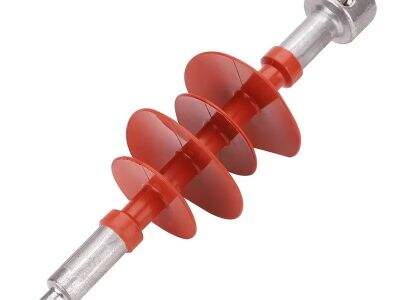Have you been working on an electrical project but unsure which dead end clamp to use? Don’t worry. Here is Kechen to help you. Therefore we provide you a guide on how to choose the right dead end clamp kom to help you, from a lot of options and make your project 100% safe and successful
What is a Dead End Clamp?
For electrical projects, they're made possible with dead end clamps. They assist in keeping your wires secure and stable. These clamps grip cables tightly to poles or towers, which helps prevent power outages and keeps everything running smoothly. There are many types of clamps, however, and Parallel-Groove Clamp Accessory choosing the right one for the job can be tricky. To help you decide, here are some key considerations to think about before making a choice.
Things to Think About
Material: Dead end clamps could be constructed from many manufacturing materials, such as aluminum, copper, and steel. The type of material you opt for is crucial as it influences the clamp's strength and its ability to withstand various weather conditions. Aluminum and steel are extremely durable and can stand the test of time, but copper is softer and easier to bend and work with, which can simplify installation.
Size: The size of the clamp really matters and depends upon the thickness of your cable. But you must ensure to choose one carefully according to the size of your cable. Too small a clamp can snap the cable while too large a clamp may not hold tight enough to anything. It is one of the most important parameters in order to install safely.
Grip Strength: The grip strength of the clamp is the amount of pressure it can take without breaking. This is referred to as tensile strength. You need to consider how heavy your cable is and how tightly it is when it is installed. Use a clamp that is rigid enough to keep everything together and avoid something happening.
Corrosion Resistance: If your project is in the open ocean, or in an area where chemicals are present, then make sure to use a non-rustable clamp. Corrosion can also make the clamp weaker and last shorter. If you haven't already identified a clamp that is rust-proof, then rust will damage and weaken it over time and it won't work well.
What to Know Before You Buy
Now that you know what you should think when buying a dead end clamp, let’s take a look at some useful tips.
Quality: The quality of the clamp really makes a significant difference. This will influence how effectively it works long-term. Hopefully you want the cheap ones that will break easily. Instead, buy quality clamps from reputable brands, eg Kechen. A good clamp will work better and last longer.
Cost: The cheapest option may be tempting at times, especially if you are working with a budget. But be mindful that quality comes with a price tag. If you skimp on a cheap clamp now, you’ll just shell out more later when you have to replace or repair it. A good clamp is worth its weight in gold; buy one now and you’ll save money in the long run.
Check Out For Safety Standards : One of the Electric Power Fitting biggest factors that you need to check is whether the clamp has safety standards. Local authorities set these standards to make sure installations are safe. Following these standards is another way to ensure that your project is both safe from harm and compliant with local law by choosing a clamp that meets these.classifications.
Dead End Clamp: How to Get the Best One?
Below tips may help you select the right dead end clamp for your application.
Ask a pro: If you’re unsure which to choose, it’s always a good idea to ask someone who really knows their stuff A clamp expert can review your project’s specific needs and recommend which clamp will best suit your exact use case.
Consider Your Environment: The environment where you’re placing your project is also very impactful. The environment surrounding your installation can impact the type of clamp you require. If your project takes place closer to the ocean, the clamps themselves should resist corrosion due to the saltwater. This can make the clamps last longer and more effective.
Verify Compatibility: Ensure the dead end clamp you're selecting is suitable for your cable and other components of your setup—such as poles or towers. There are a number of components to the install, so each of them needs to work well together to have a installation that is successful and safe.
How to Pick the Right Dead End Clamp
With all that aforementioned info, these simple steps will guide you to select the appropriate dead end clamp for your electrical installation.
First, determine the diameter of your cable. You will need to know this so that you can know what clamp to buy for your specific size.
Next, consider the environment in which your installation resides. That will help you decide which material or clamp to use.
Then figure out what tensile strength your clamp Tension Clamp Power Accessories must have. That will make sure it can support the weight and tension of your cable.
Read me: Pick a good manufacture, like Kechen. Doing this can help ensure that you are purchasing a good product.
Select a clamp that ensures to mutual regulation of safety. It is vital to keep your installation secure.
Lastly, ensure the clamp is compatible with your cable and other installation parts. A successful project requires compatibility.
Therefore, an electrical designer needs to make careful choice of dead end clamp to maintain safety and functionality of the project. It’s very important to take all the above-mentioned things into consideration and don’t shy away from asking an expert if you feel the need. Before you begin working, don't forget to purchase clamps from trusted companies such as Kechen, as I mentioned earlier. By using these tips and guidelines, you will successfully find the best dead end clamp for all your electrical works.

